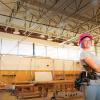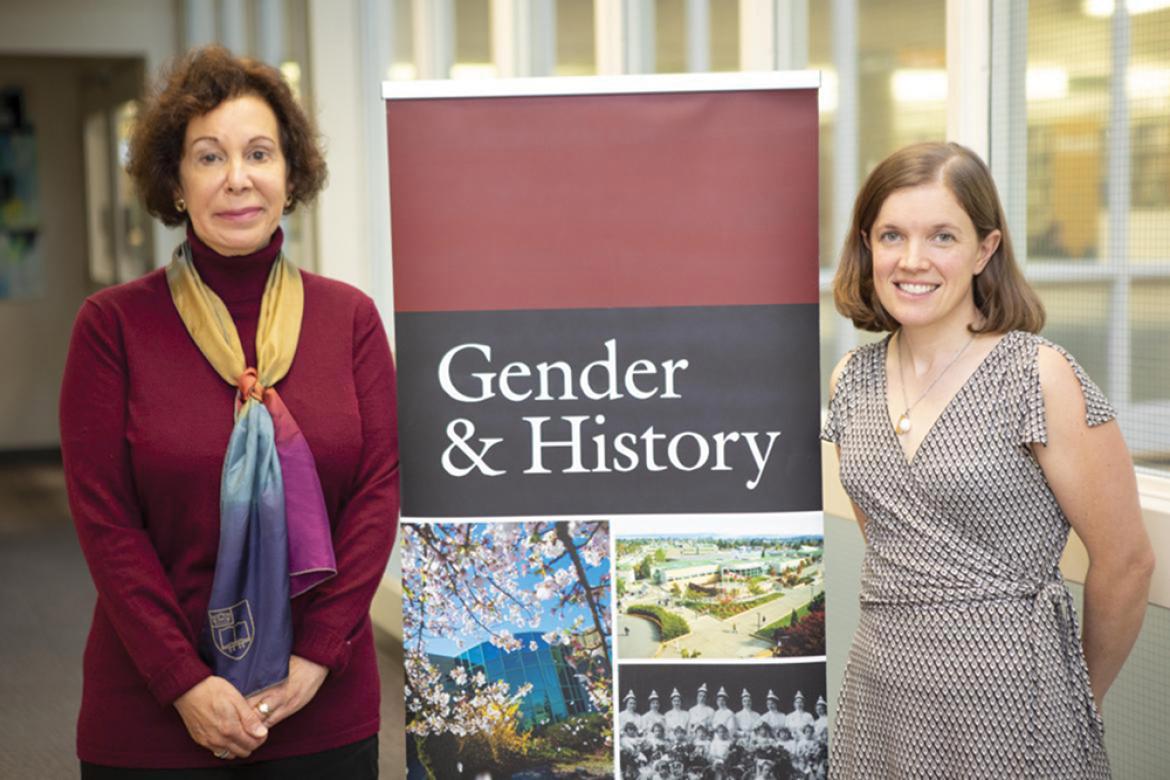
History Professors Dr. Cheryl Krasnick Warsh, left, Dr. Katharine Rollwagen and Dr. Cathryn Spence (not pictured) are the North American co-editors of Gender & History.
September 18, 2019 - 10:15am
Every year, faculty and students at VIU go out into communities to participate in research that is having a significant impact on the region as well as giving students important experiential learning opportunities. Here are a few projects they engaged in this year. For more stories, visit research.viu.ca.
Gender Historians Bring International Research Journal to VIU
The world’s leading journal on the history of gender relations is now basing its North American editorial operations out of VIU.
Last year, VIU History Professors Dr. Cheryl Krasnick Warsh, Dr. Katharine Rollwagen and Dr. Cathryn Spence made a successful bid to become co-editors of Gender & History, a well-respected international journal that publishes academic articles exploring the history of gender relations.
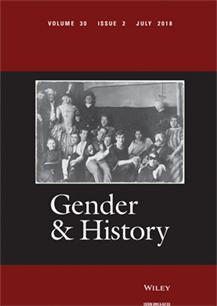 The journal started about three decades ago by two female historians, one located in New York State, the other in England. When Krasnick Warsh learned about the open call to take over the North American home of the publication from the University of Minnesota, she jumped at the chance.
The journal started about three decades ago by two female historians, one located in New York State, the other in England. When Krasnick Warsh learned about the open call to take over the North American home of the publication from the University of Minnesota, she jumped at the chance.
“It’s another way to bring VIU into the spotlight internationally and showcase the expertise of our professors,” says Krasnick Warsh. “The three of us specialize in different aspects of gender history and we all teach courses that relate to gender, so we’re having fun incorporating what we’re learning into our lectures now that we’re exposed to all the emerging, cutting-edge research in this discipline.”
VIU will be the home of Gender & History for the next five years, with the option to renew for another five years before it passes to another North American institution. The journal publishes three times per year, and the VIU editors work closely with the other editorial team at the University of Glasgow to review and vet content.
“So far the best part of the job for me is collaborating with colleagues, both at VIU and at other institutions,” says Rollwagen. “The other bonus is the opportunities the journal gives our student editorial assistants; workingwith and mentoring them is a rewarding part of the job. The skills they acquire managing both manuscripts and people are invaluable.” “We work well together as editors, the students we have hired as our editorial assistants have exceeded expectations, and we are looking forward to further promoting the journal and VIU in coming years,” adds Spence.
Developing a Water Budget for Vancouver Island
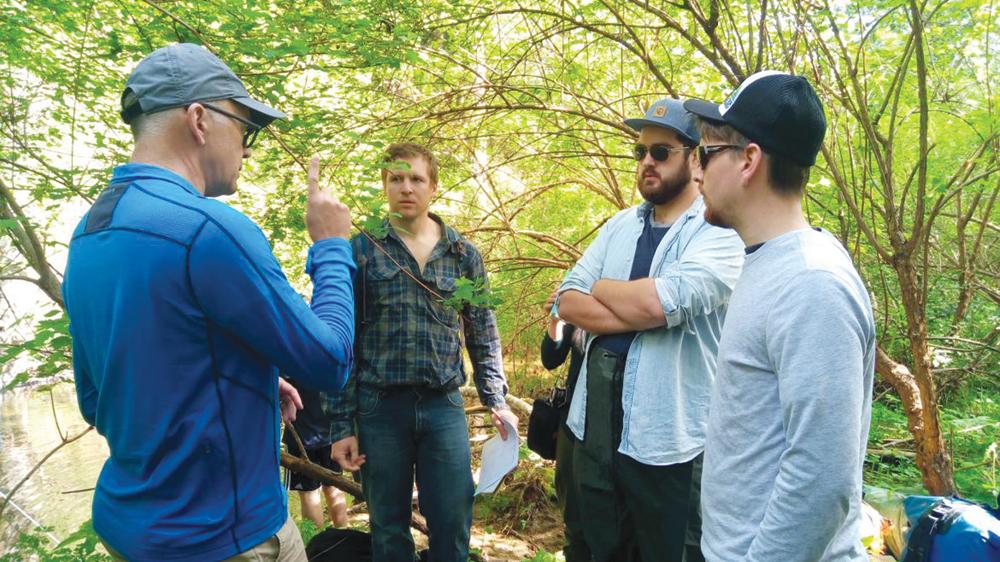 In resource-rich Canada, people often assume our water supply is limitless, but between contamination and overuse, we have to wonder: how much water is really available?
In resource-rich Canada, people often assume our water supply is limitless, but between contamination and overuse, we have to wonder: how much water is really available?
VIU Geography Professor Dr. Alan Gilchrist and Master of Geographic Information Systems Applications student Tim Sivak have partnered with the BC Ministry of Forest, Lands, Natural Resource Operations and Rural Development; the Regional District of Nanaimo; and the Cowichan Valley Regional District to develop a water budget that will help answer this question for many communities and regions across Vancouver Island.
In February 2016, the BC Government updated its Water Act with the Water Sustainability Act (WSA). The goal of the WSA is to ensure a sustainable supply of fresh, clean water to meet the needs of BC residents now and in the future. With that in mind, the Act requires that groundwater be licensed for non-domestic use.
“The problem is that nobody is sure how much water is actually out there because there is limited information and mapping available,” says Gilchrist. “This runs the risk of over-allocation of water.”
This is where the water budget comes in – to provide an understanding of how much water is available for human use.
“Once completed, the water budget will give us scientific measurements and estimates regarding the amount of water in each basic component of the hydrological cycle, allowing us to calculate the movement of water throughout the entire system,” says Gilchrist.
Basic components of water budgets include precipitation (rain and snow), evapotranspiration (evaporation from soil, transpiration by plants, etc.), surface water (lakes and rivers), groundwater flow (aquifers) into and out of the watershed; changes in surface water and groundwater storage; changes in snow and ice storage; and human withdrawals and inter-basin transfers.
Gilchrist is working closely with Sivak to determine a way to quantify existing data. From here, Sivak will develop a computer model and together they will create a publicly accessible, interactive map.
“Existing climate change data shows that Vancouver Island can expect an increase in overall temperatures, an increase in the amount of rain in the winter and drier summers,” says Gilchrist. “Water systems on Vancouver Island are already stressed during the summer but with the information provided by the model, we will be able to better predict and prepare for these changes.”
Recreation Prescription Project Gets Youth Moving
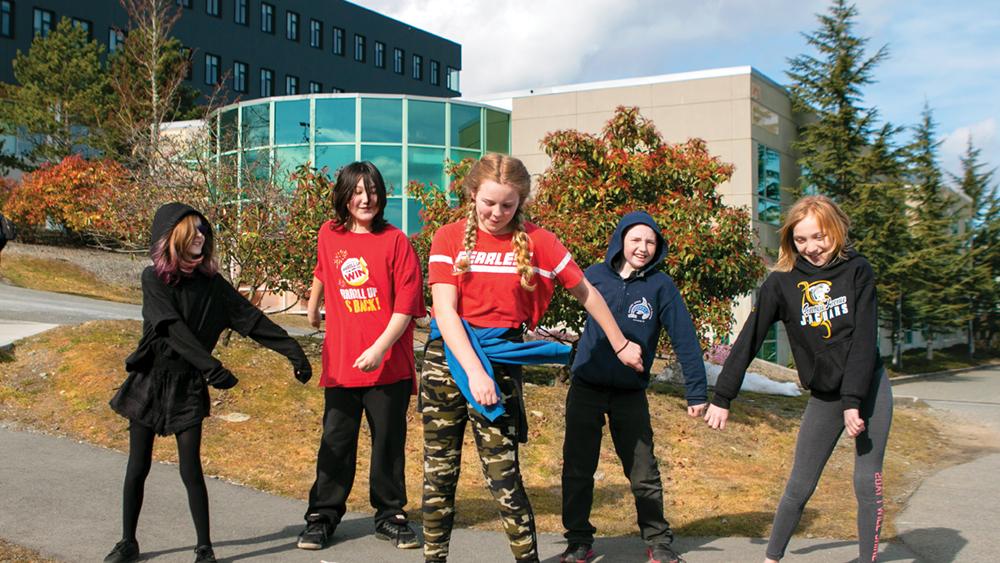 VIU is empowering elementary school children to take charge of their health through a new recreation program.
VIU is empowering elementary school children to take charge of their health through a new recreation program.
Thanks to a $50,000 grant from Island Health, the University has partnered with the City of Nanaimo Parks and Recreation, the Nanaimo Division of Family Practice, and the Nanaimo Ladysmith School District to introduce Grade 5 students to more active lifestyles. The 16-week Recreation Prescription Project is offered in three elementary schools to more than 100 students.
“We are targeting 10-year-olds as research shows this is the age children are still willing to try new things without fear of peer judgment and aren’t too concerned with personal appearances,” says Joanne Schroeder, Chair of VIU’s Master of Arts in Sustainable Leisure Management program. “We are trying to introduce students to leisure access before those factors start to influence them and it becomes more difficult to get them active.”
Students participated in the program for two hours per week each semester from October to March. Activities included nature walks, playing games to develop physical literacy, treasure hunts, ice skating, participating in team sports, swimming, and exploring local parks and trails.
It wasn’t just elementary school students learning. Nursing; Sport, Health and Physical Education (SHAPE); Tourism and Recreation; and Child and Youth Care students teamed up to implement the program. Concurrently, the team conducted a research report focusing on the students’ social, mental and physical well-being through pre-, mid- and post-health assessments and wellness surveys.
“For many program participants, the only time that they are physically active is during school hours,” says Alyshia Coombs, project coordinator. “By allowing the students access to activities such as swimming, walking to their local park, or talking about the importance of imagination and taking screen breaks, it encourages them to participate with their family and friends after school hours.”
New Drug Testing Methodology Aims to Help Save Lives
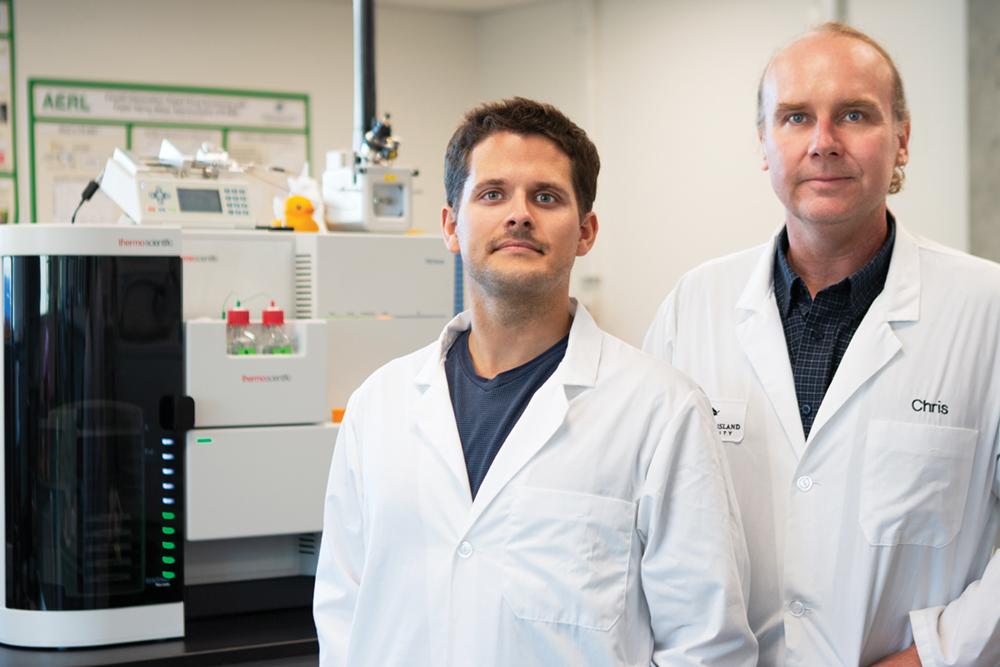 A device that gives drug users immediate knowledge that could prevent an overdose and even death is what VIU researchers hope to make a reality in the near future.
A device that gives drug users immediate knowledge that could prevent an overdose and even death is what VIU researchers hope to make a reality in the near future.
Chris Gill, VIU Chemistry Professor and Co-Director of the Applied Environmental Research Laboratories (AERL), and his team have developed a method for checking drugs for toxic substances, such as fentanyl or carfentanil, using mass spectrometers. While existing methods can tell users if these substances are present, the new methodology is able to quickly measure levels present using very small samples, providing results on-site as opposed to sending a sample to a lab.
“It doesn’t do any good to say your drug is tainted with fentanyl or carfentanil or whatever other drug – what people really need to know is whether it is at a dangerous level,” explains Gill.
Their research has earned the team a $25,000 prize in Stage 1 of the Health Canada Drug-Checking Technology Challenge. Funds will be used to help push the research through to the second stage of the challenge and a possible prize of $100,000. The final stage awards $1 million to the winner.
Thermo Fisher Scientific, a major mass spectrometer manufacturer, has loaned Gill and the AERL its newly developed, high-throughput direct sampling system, a VeriSpray TM PaperSpray ion source equipped mass spectrometer. Paper Spray is a way of introducing samples to a mass spectrometer. For the drug testing, a small drop of sample is placed on a pointy paper strip, which is directly analyzed by the instrument.
“We are extremely grateful for the support of Thermo Fisher,” says Gill. “the Verispray TM system we are receiving will allow us to easily perform paper spray mass spectrometry methods in our research, crucial for our development of advanced harm reduction drug checking methods and technologies.”
The biggest hurdle for the AERL team is to secure more than $500,000 in funding – which Gill has been actively seeking – to hire a post-doctoral researcher and develop truly portable instrumentation for harm reduction use on-site.
“This system is also adaptable,” adds Gill. “We are facing a fentanyl crisis in Canada and the United States right now, but we don’t know what the next opioid or other dangerous drug that hits the streets is going to be. We can easily change our method to add the detection of new substances as we become aware of them, helping people who use drugs make better decisions or change their drug use.”
Tags: Research | VIU Magazine


